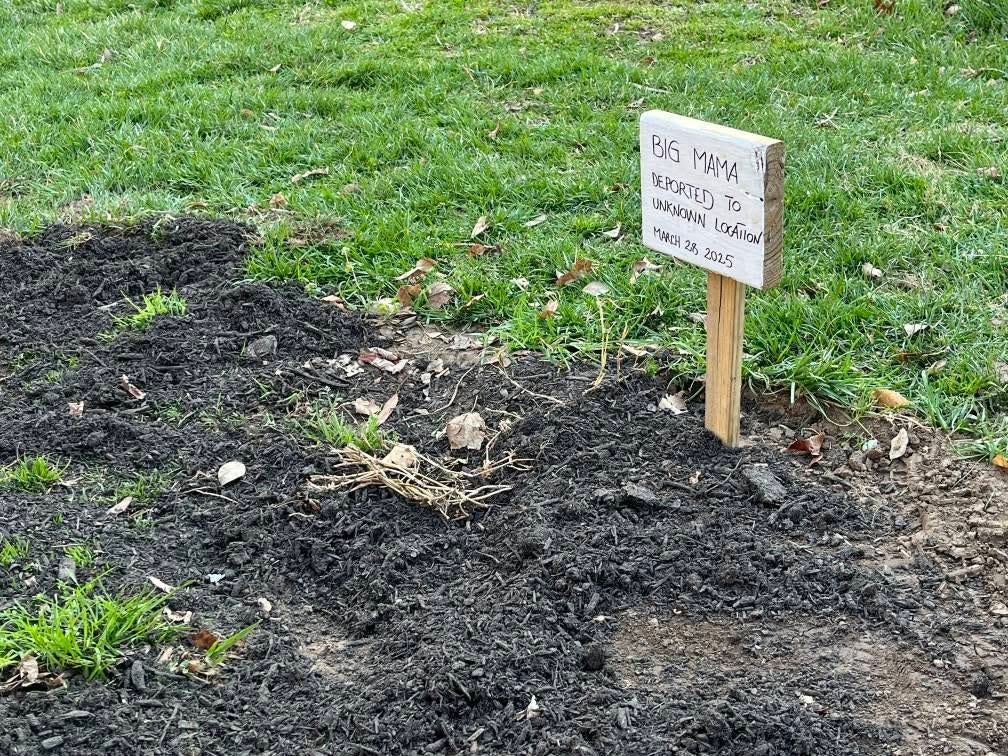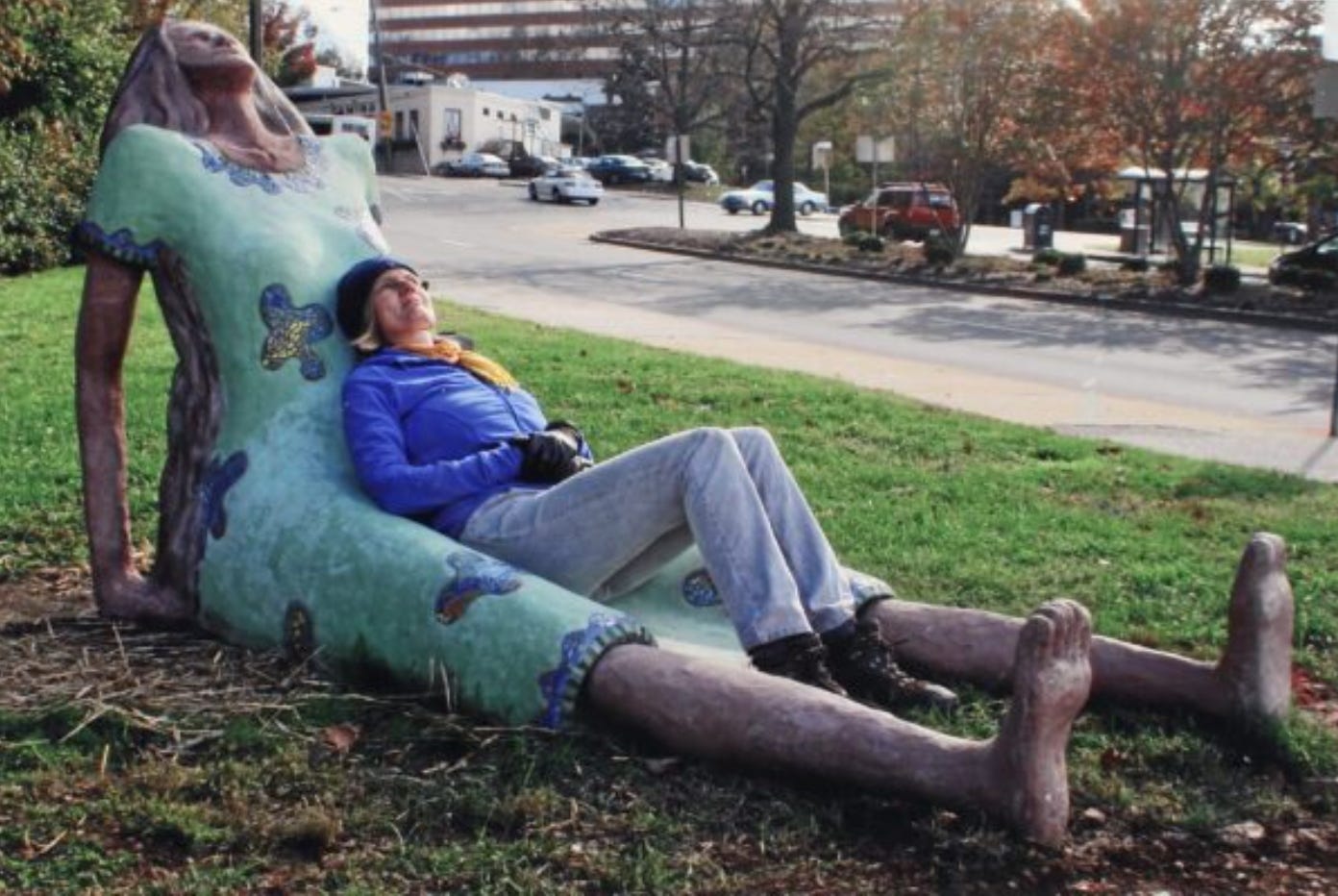So long, Big Mama
“A lot of women told me they touched Big Mama every time they walked by and how it connected them to their own strong feminine self..."
The big statue of the woman sitting on the grass in front of the McGuffey Art Center with her head thrown back was an agreed-upon meeting place downtown for my 17-year-old son and his friends, a landmark they’d known their whole lives, so when it suddenly disappeared last week he was understandably shocked. “the woman statue in front of mcguffey art center is completely gone!!!” he texted me. “All let’s left is that sign.” And included the photos below:
Was it removed in protest? Did someone steal it? People were encouraging me to find out, including my son. It was like someone had died or been kidnapped.
"It has been a very dear part of our landscape," said McGuffey operations manager Bill LeSueur. "So many kids crawling on her, so many photos taken. Alas, time had taken its toll and she had begun to crumble here and there, and we thought it was best she retired."
In 2011, local sculptor Ninni Baeckström created “Big Mama” for the now-defunct Art in Place program, which placed sculptures at various locations around Charlottesville. Big Mama was located near the sidewalk at the intersection of Preston Avenue and McIntire Road for a year before being moved to its spot at the McGuffey. The statue was made of polymer-enhanced cement, welded rebar, and glass mosaic for her dress. And according to Baeckström, Big Mama was “a symbol of the strong, mature feminine, the earth mother.”
“I made her big enough for adults to sit in her lap,” says Baeckström. “And the attention she received from the start surprised me.”
While at the intersection of Preston and McIntire someone attached a golf ball to her forehead that would reappear after others removed it. The day she was moved to McGuffey someone poured spaghetti and bolognese sauce on her head. Baeckström also says some young men filmed themselves having sex with the sculpture and there was a lot of climbing on and jumping on her head.
“I felt distress after witnessing such disrespect and anger towards the feminine,” says Baeckström, “but that didn't surprise me.”
Mostly, people loved Big Mama, says Baeckström.
“Every time I walked by, there were children getting their pictures taken, sitting in her lap, like a photo op with Santa Claus,” she says. “A lot of women told me they touched Big Mama every time they walked by and how it connected them to their own strong feminine self. It made me pleased and proud to know Big Mama had such a positive effect on people.”
Baeckström says she washed and repaired Big Mama several times, but all the attention wore her down and she was asked to remove her from McGuffey after her foot broke off and cracks appeared in her cement dress.
“She was falling apart, and I didn't have it in me to put her through major repair,” says Baeckström. “It was time for Big Mama to retire, and unless one of the young men who helped me move her took her home, she ended up in the earth at the Ivy Landfill. So, in a way, returning to where she came from.”
And the sign she left behind?
“It seemed like a good way to add a current twist to Big Mama’s sudden disappearance,” says Baeckström.




